


The Basilica of Assisi, where the Giottos and Cimabue's were nearly destroyed in 1997. We visited them before we walked.
“I like getting off the beaten path. Venice is about as beaten a path as you can get,” Caroline mused as we rode the train from Venice to Ravenna.
Dante spent his last days here, in exile from his beloved Florence.
Our friend Luca says its his favorite part of Italy.
Many do.
So we arrived, got a quick lunch, and made our way to see the famed mosaics of the Basilica of San Vitale, Mauoleo de Galla Placida, Battistero deglis Ariani, and at the Basilica Apollinare Nuovo. The town was full of paintings of people on bikes.
On our way a woman rode her bike by, on the phone, still wearing high heels.
“You have to be stylish to ride,” noted number two. Everyone rides here.
Mom had suggested we see the Mosaics of Ravenna. And she was right. They did not disappoint. Our first stop was the Basilica. And mom was right. The mosaics did not disappoint.
These quiet Byzantine images offer a harmony of colors and shapes.
Caroline pointed out the image of Empress Theodora.
Number two took a few pictures, pointing out the way the images of the old testament scenes look like those faces she saw in the Book of Kells in Ireland.
She points to several, describing shapes and colors that inspire her.
“I’m impressed with your eye.”
“I’ve seen a lot of art dad.”
“As much as we’ve seen the last few years.”
Outside the basilica, in the yard, its quiet, like time is passing the place by. A man with a big white beard is sitting smoking a cigar, taking tickets. I think of my grandparents and mom coming here, listening to the same crickets, looking at the same trees, the same mosaics, feeling the same heat outside. Hot, it reminds me South Georgia at my grandparents’ growing up, like an other worldly moment of time outside of time.
Greens, blues, reds, tiles of blues – birds, angels, faces protruding from the shapes of these ageless tiles, first laid out in the 5th century.
The images speak to mysteries of history. For the most part, we do not know who the artists were.
Looking at the Battistero deglis Ariani, we do not know much about the Arians whose tiles were stolen, appropriated by the Orthodox church.
We walk outside of town to take in the Mosoleum of Teodorico, the Ostergoth ruler. We don’t really know why its out of town or much about him.
Much of it is still a mystery.
We do know about Dante who spent his last years here writing in exile from Florence. So w go see a memorial for him.
The bells ring as we complete our walk, contemplating the days ahead on the way of St Francis. Over the next two weeks, we’ll walk from Assisi to Rome.
Caroline dreams about learning Italian, living in Rome. One day we will, we promise each other over and over.
It’ll be even harder to get to Assisi from here. But we can do it. There are always lots of emotions on the way. So we’ll have to be patient and forgiving.
The next day, we’d make our way to catch the 5:55 train to Assisi, where we’d go see the Basiliica of St Frances of Assisi, get our credential for the Way of Assisi and start our 15 k journey from Assisi to Rome the next day.
The work in the Basilica is just as striking as it was a quarter century ago when I first went, moved by the Giotto’s and Cimabues. Six years after I left Italy in September of 1997, an earthquake ravaged the place destroying many of the frescos. The world collectively gasped looking at the beloved frescos in ruins. But Italy got it together and rebuilt the space and its frescos. We made our way to see them.
At the office for the Way of Assisi, we collected our credentials for the journey.
Do you have any advice, I asked the women getting us our credentials.
“Sing,” she suggested. “Frances sang a lot. And be present. Don’t look at the world you see as out there. Be part of it.”
Finishing we toured through the hauntingly beautify basilica, with is frescos for the ages. There’s Giotto, Lorenzetti and Cimabue, reminding us to look out, to care for the poor. To think about emotions, to look out for feelings and colors.
Tomorrow we’ll walk.























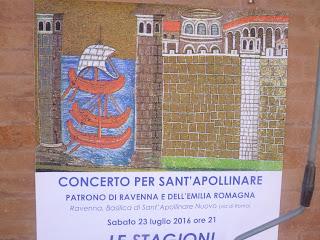


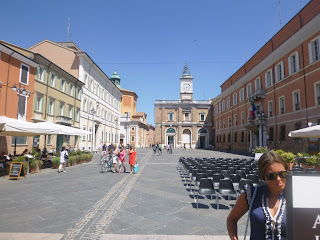


















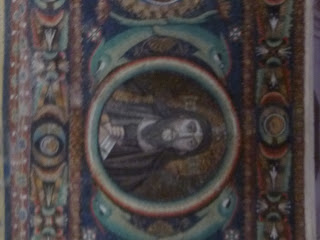








































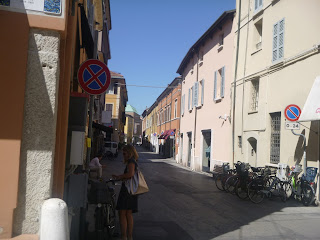


























































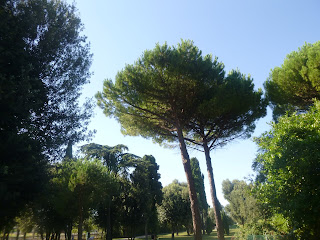





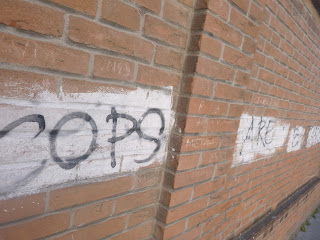






































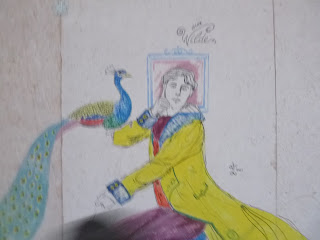















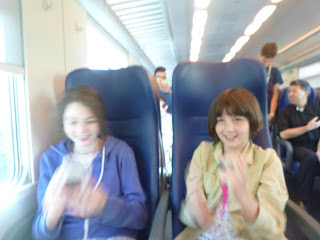







































No comments:
Post a Comment